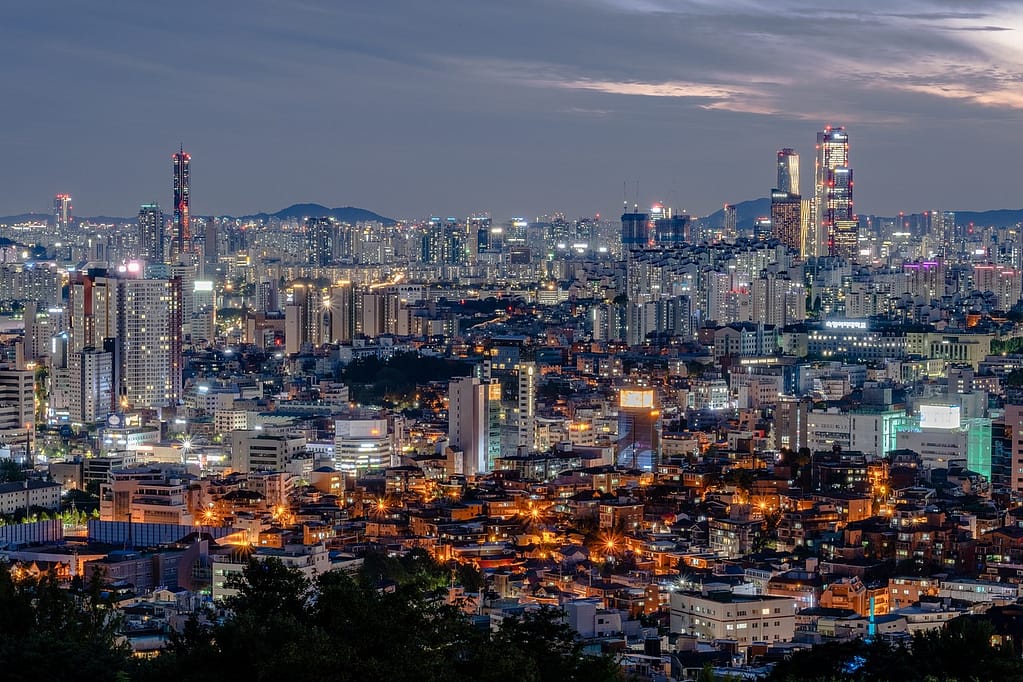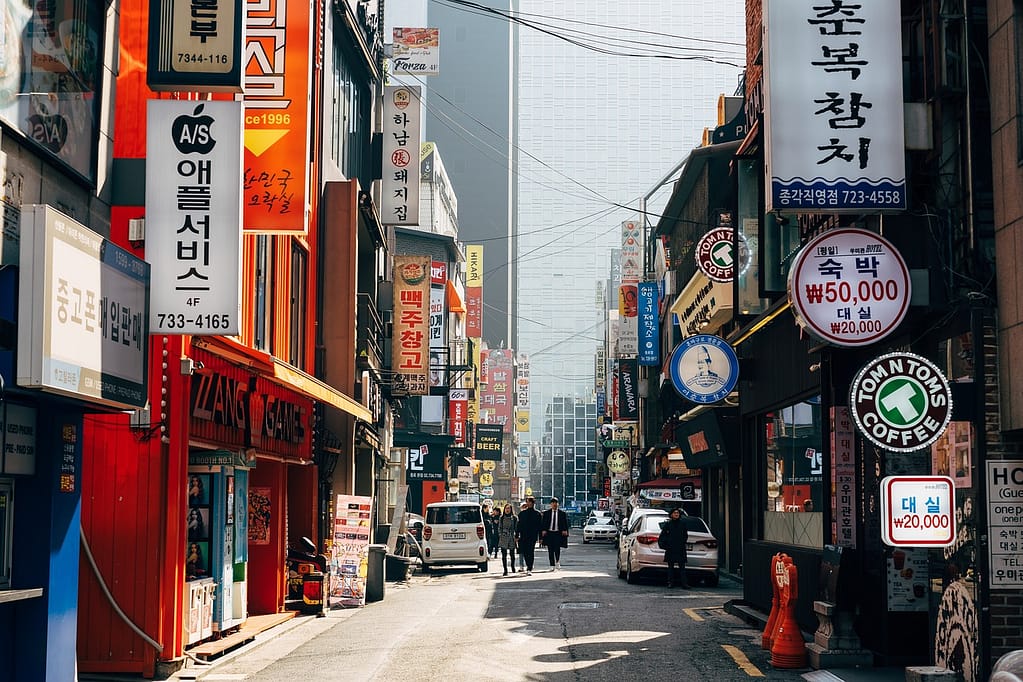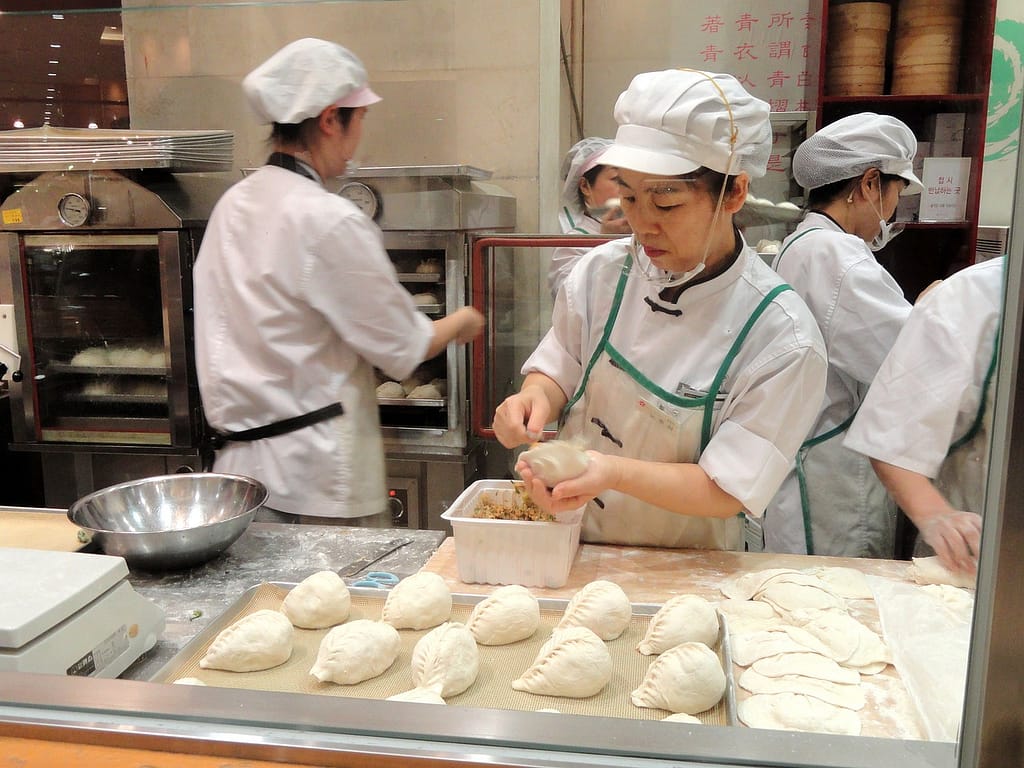South Korea, with its blend of modern cities and rich cultural heritage, is a fantastic destination for travelers. Navigating without knowing the language can be a breeze with the right tips and tools. Here’s your detailed guide to traveling through South Korea, understanding local etiquette, and enjoying the cuisine.

Preparation Before You Go
Learn Basic Phrases
Knowing a few key phrases can help:
- Hello: 안녕하세요 (Annyeonghaseyo)
- Thank you: 감사합니다 (Gamsahamnida)
- Excuse me: 실례합니다 (Sillyehamnida)
- Yes: 네 (Ne)
- No: 아니요 (Aniyo)

Download Helpful Apps
- Google Translate: For translating text and speech.
- Naver Map: More accurate than Google Maps in Korea.
- KakaoTalk: Popular messaging app, useful for communication.
- Papago: Excellent for translating Korean signs and menus.
Get a SIM Card or Pocket Wi-Fi
Stay connected with a SIM card or pocket Wi-Fi, available at major airports and online.
Navigating Public Transportation
Subway and Trains
South Korea’s subway and train systems are efficient and user-friendly:
- KORAIL Pass: For unlimited travel on certain train routes.
- T-Money Card: A rechargeable card for buses, subways, and taxis.
- Naver Map: Use this app for accurate transit routes and schedules.
- English Announcements: Major stations have English signs and announcements.

Buses
Buses are a great way to explore:
- Bus Maps: Available at tourist centers.
- Exact Fare: Use T-Money or have exact change.
- Bus Stops: Major stops usually have English signs.
Accommodation Tips
- Booking Platforms: Use sites like Booking.com, Agoda, or Airbnb.
- Hanok Stays: Experience traditional Korean housing.
- Hotels: Look for family-friendly options with English-speaking staff.
Dining Out
Local Cuisine
- Kimchi: Fermented vegetables, typically spicy.
- Bibimbap: Mixed rice with vegetables and meat.
- Korean BBQ: Grill your own meat at the table.
- Tteokbokki: Spicy rice cakes.
- Samgyeopsal: Grilled pork belly.

How to Eat It
- Chopsticks and Spoons: Chopsticks for solid foods, spoons for soups and rice.
- Sharing: Dishes are often shared; use serving utensils.
- Kimchi with Everything: A side dish served with most meals.
- Korean BBQ: Grill meat, then wrap in lettuce with sauces and sides.
- Tteokbokki: Enjoy as a street food or in a restaurant, often spicy.
Etiquette Tips
General Etiquette
- Bowing: A slight bow is a common greeting.
- Respect Elders: Always address elders first and give them respect.
- Shoes Off: Remove shoes before entering homes and some restaurants.
- Personal Space: South Koreans value personal space, especially in public places.

Dining Etiquette
- Wait to Eat: Wait for the eldest to start eating first.
- Two Hands: Use both hands when giving or receiving something.
- Quiet Eating: Avoid loud eating noises.
Sightseeing and Activities
- Gyeongbokgung Palace: Explore the grandest of Seoul’s palaces.
- Tips: Watch the changing of the guard ceremony.
- Price: ₩3,000 for adults.
- N Seoul Tower: Get panoramic views of the city.
- Tips: Visit at night for the light show.
- Price: ₩10,000 for adults.
- Bukchon Hanok Village: Wander through traditional Korean houses.
- Tips: Respect the residents’ privacy.
- Price: Free.
- Myeongdong Shopping Street: Shop for cosmetics and fashion.
- Tips: Try the street food stalls.
- Price: Depends on personal spending.
- Jeju Island: Enjoy beautiful beaches and volcanic landscapes.
- Tips: Rent a car to explore the island.
- Price: Ferry from ₩20,000; flights vary.

Emergency Tips
- Emergency Numbers: Dial 112 for police, 119 for ambulance/fire.
- Embassy Contact: Keep your embassy’s contact information handy.
- Phrase Cards: Carry cards with essential phrases in Korean for emergencies.

Leave a Reply